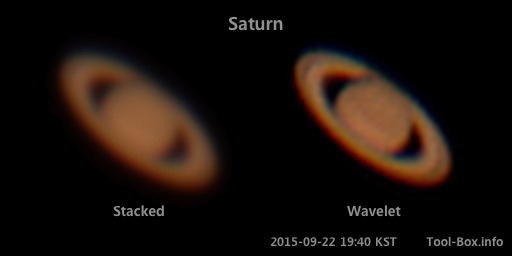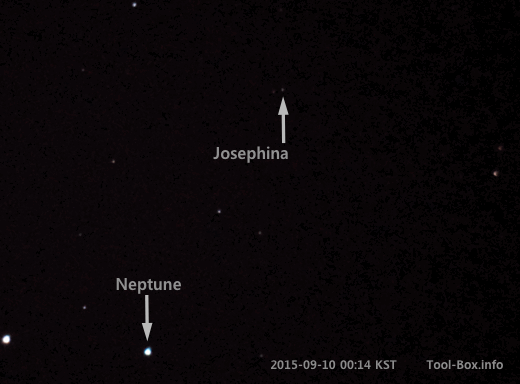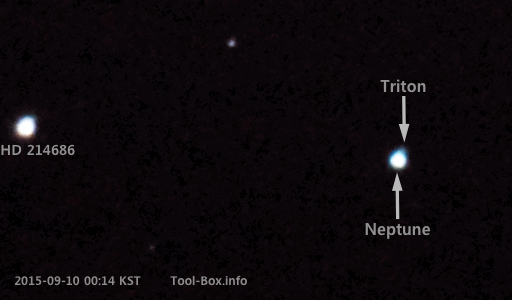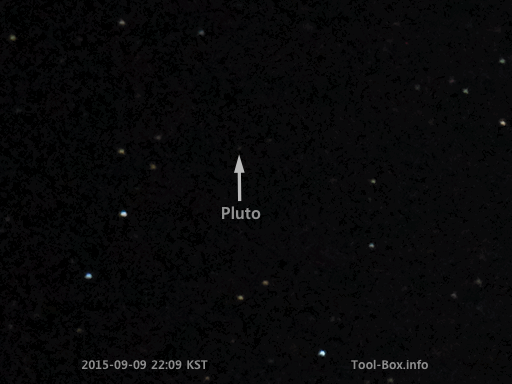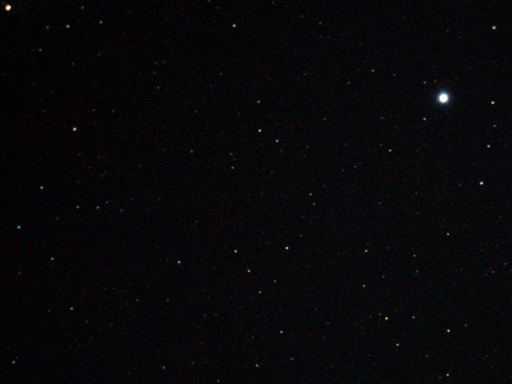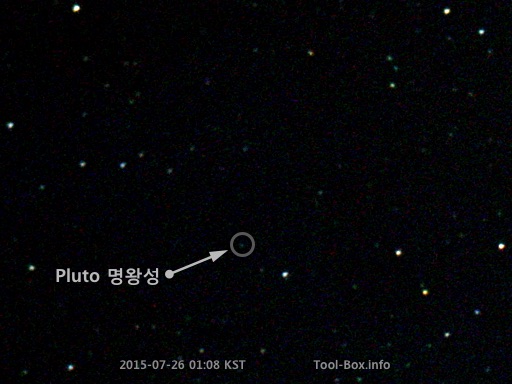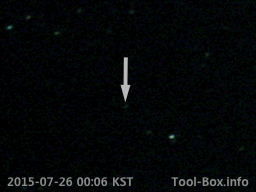Mars and Saturn near opposition
Posted by Wesley on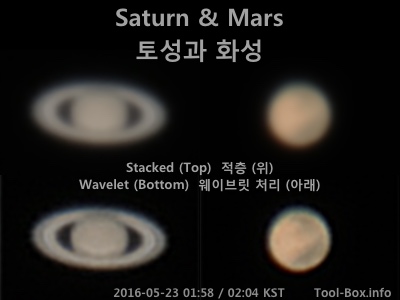
Mars and Saturn as seen on May 23, 2016 (100% size)
This morning, not long after midnight, I gazed the southern sky to find the planets Saturn and Mars near the full Moon. These planets were both near their oppositions - it was just 11 days away for Saturn and Mars went through it less than 6 hours ago. You don't see their oppositions happening close together often because Mars opposition happens every 25 to 26 months, while it's around 12 months and 2 weeks for Saturn. The next time the two occurring within two weeks of each other is in 2082, when it's 4 days apart (Saturn: August 29, Mars: September 2).
I attached my iPhone 6S Plus onto the Celestron X-Cel LX 9mm eyepiece that I bought relatively recently to observe the planets in more detail. It was the first time both were used on the telescope for astrophotography. They both worked as expected and produced the images you see above. The brightness of the Moon nearby may have washed out a bit of detail, but other than that it turned out fine. I may have to try out using filters next time to see if it makes any difference.
Telescope: Celestron NexStar 6SE + X-Cel LX 9mm eyepiece
Device: iPhone 6S Plus (afocal)
Filters: None
Location: Naju, Korea
Stacked with PIPP 2.5.5 and RegiStax 6.1.0.8
Saturn
Settings: 29mm - ISO 125 - 1/20s - f/2.2
Time: 2016-05-23 01:58 KST
31 photos
Mars
Settings: 29mm - ISO 32 - 1/90s - f/2.2
Time: 2016-05-23 02:04 KST
100 photos
Defined tags for this entry: astronomy, Celestron NexStar 6SE, iPhone 6S Plus, Mars, planet, Saturn, telescope
